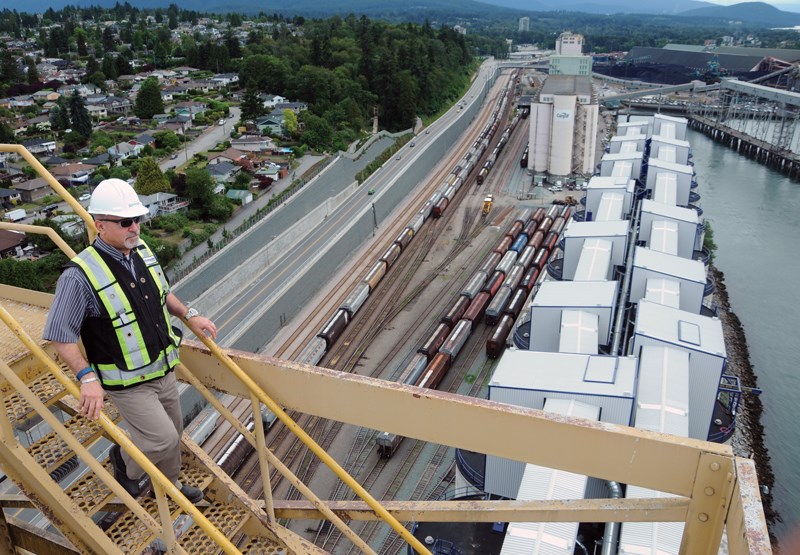The future is looking grainy on the North Shore.
Overall cargo through the Port of Vancouver has increased four per cent to 69 million tonnes over the same period last year with mid-year records in bulk grain, according to Vancouver Fraser Port Authority statistics released this week.
Much of the increase in grain output is thanks to the 5.7 million tonnes of grain, specialty crops and feed that were exported out of the North Shore terminals between January and June of this year, according to the port – a nine-per cent increase from last year’s record.
“Certainly for the North Shore, the grain numbers are very strong and it points to what we’ve been seeing in terms of the level of investment in grain,” said Robin Silvester, the port’s president and CEO, noting that Richardson International and Cargill Canada have both completed expansion projects to increase their capacity or efficiency.
Fuelling the growth in exports is a string of good years in Canadian crops, those increases in capacity and growing appetites and changing diets in Asia, Silvester said.
“Fundamentally, I think it comes back to Canada is a good producer of high-valued, high-quality product. The global population, to the west of us in particular, is growing. As China and India’s GDP increases, people’s diets switch a bit more protein-based and so that’s leading to demand for grains to feed (livestock).”
Those grain numbers are likely only to climb higher as two major new grain terminals are either under construction or going through the approval process on the North Shore.
Preliminary work has begun for G3’s new terminal and the foot of Brooksbank Avenue, which will include 48 14-storey grain silos capable of handling 180,000 tonnes, and a rail loop with capacity for three trains of up to 150 cars each.
Currently, crews are doing site cleanup, compacting soil and removing creosote piles, with plans to have the facility online in 2020.
“They’re really in the preparation phase of the construction but forging ahead,” Silvester said. “I think we’re in a good spot where we have capacity available now to service the growth and obviously the G3 project is a really important one to create that next big tranche of medium to long-term capacity.”
And another player is looking to enter the grain game. Fibreco on McKeen Avenue, is looking to transition out of the wood pellet business and spend $85 million to build 56 new steel agricultural storage silos on the terminal site, ranging from 12 to 18 storeys and capable of handling 170,000 tonnes.
For comparison, Cargill Canada’s silos hold 240,000 tonnes and Richardson International’s hold about 180,000.
Unlike the other terminals, the Fibreco project is on privately owned land and outside of the port’s jurisdiction. An application has been filed with the District of North Vancouver but it has not come before council yet.
Right now, there isn’t enough rail capacity to serve four terminals on the North Shore, Silvester said, so the port will be seeking funding from the federal government to update the ventilation system in the rail tunnel that meets the CN Rail bridge over the Second Narrows and build new rail overpasses for Burnaby drivers. That will allow longer trains to pass through more frequently and cross the vertical lift bridge while it is lowered.
“It’s a critical corridor. We know what needs to be done and we’re hopeful that the federal government funding will now catalyze that,” he said.



